Exploring New York’s Industrial Past in "Cathedrals of Industry"
Join photographer Michael L. Horowitz for a journey through 50 years of photographs!


The castle-like Park Slope Armory encompasses an entire city block in Brooklyn, bounded by 7th and 8th Avenue, and 14th and 15th Streets. Like many of the city’s armories, the armory has been reused from its original purpose as the headquarters for the 14th Regiment of the New York State militia, and now houses sports facilities run by the YMCA and the Park Slope Armory Women’s Shelter. But amidst the bustling activity within the building today, the Park Slope Armory reveals many fascinating secrets.
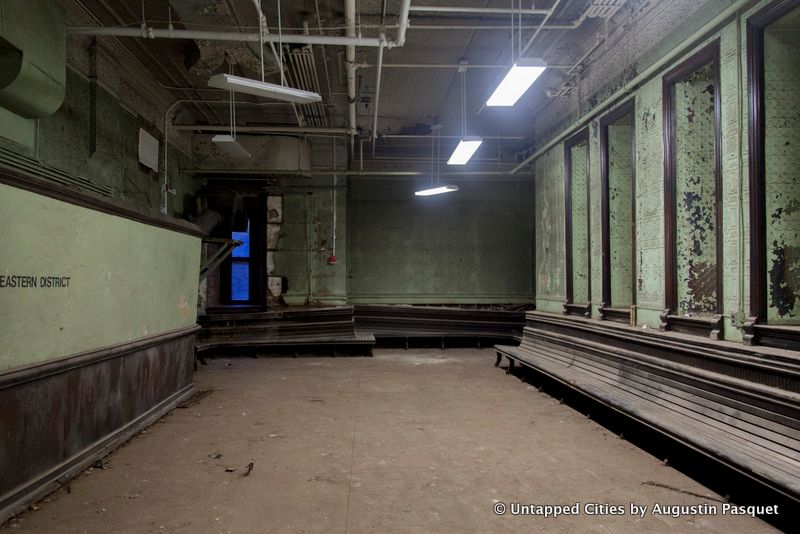
The militia of the 14th Regiment once used an extensive, multi-level shooting gallery below the building. The waiting room is an incredible sight to behold – green-tinged, tin walls and ceilings, with wraparound wooden benches. There was once a wooden railing in the space that is now located on the second floor of the armory, dividing the shelter from the rest of the building.
A narrow hallway from the waiting room leads down to the shooting galleries, which were housed in barrel-vault spaces. Staircases led down to half floors from which the targets would be raised from but portions of the floors have collapsed.
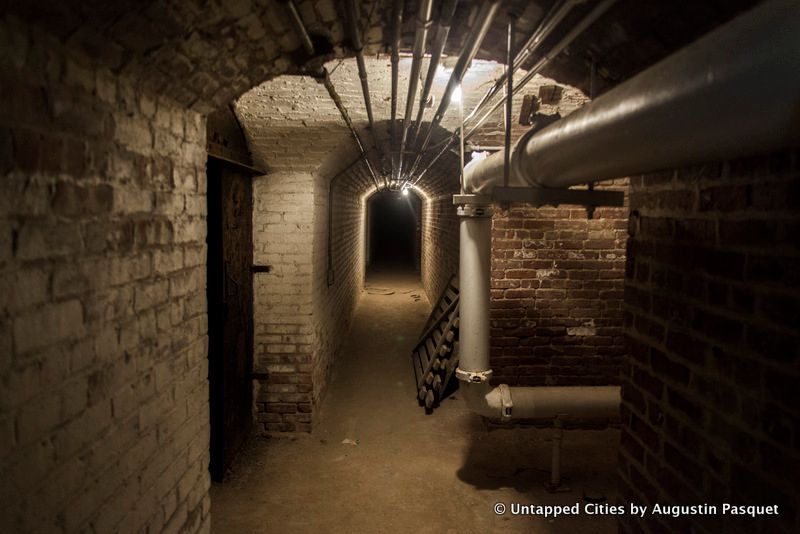
There were two galleries – one for short range hand guns and one for longer range shooting. The galleries are now pitch black, with the only light emerging from the hallways:
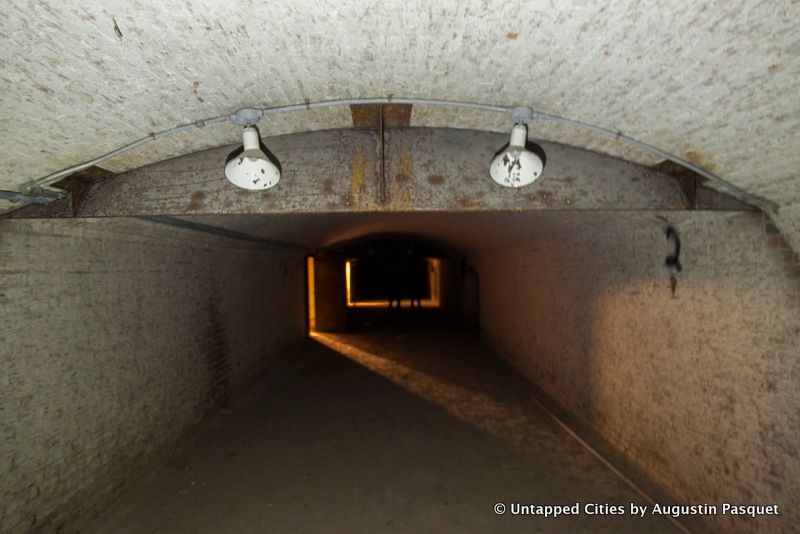
You can still see bullet holes in the metal at the end of the firing range:
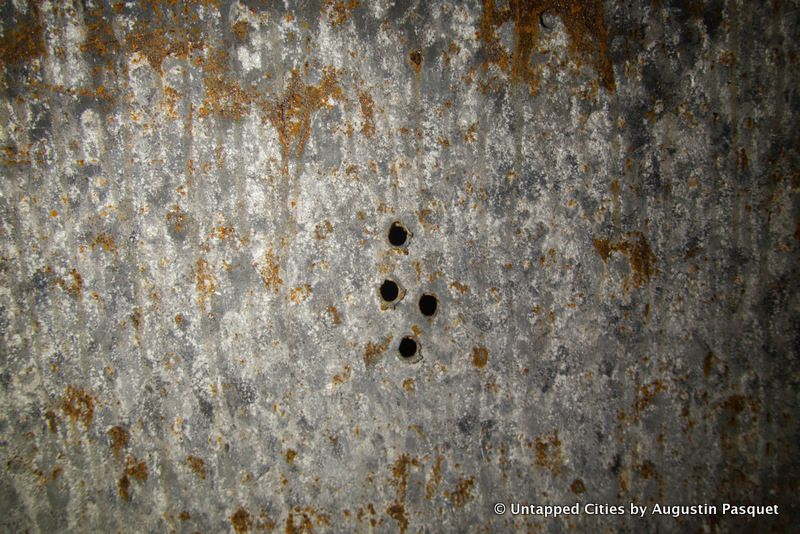
The lower levels of the armory used to also contain horse stables, and possibly a bowling alley.
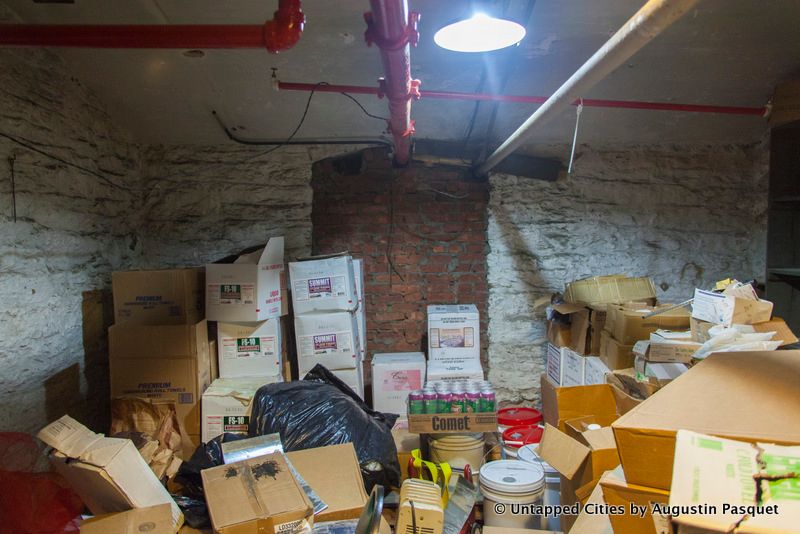
The Park Slope Armory was built with a tunnel that led from the 14th Street side of the building into the middle of Prospect Park. The bricked-up entranceway in the above basement storage room is the former entrance to the tunnel. You can feel a breeze from the removed bricks on top of the entranceway. But it is believed that large portions of the the tunnel collapsed due to the construction of the subway and from residential expansion in Park Slope.

Tom Miskel, a Park Slope resident and veteran of the Vietnam War has been working on a multi-room Veterans Museum inside the Park Slope Armory, which is chock full of artifacts from the many wars fought by the United States from the Civil War to the Vietnam War. The museum was already in place before Miskel arrived, who also serves as a de-facto historian for the armory, but he’s been actively expanding, archiving and organizing the place.
The Park Slope Veterans Museum is currently open by appointment only but Miskel is so knowledgable, it is definitely worth a visit. Check out more photographs of the museum here.
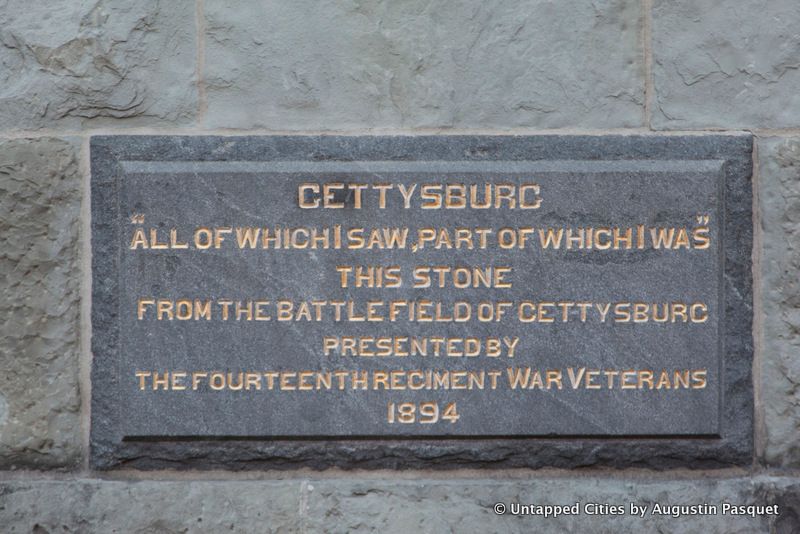
On the front facade of the Park Slope Armory along 8th Avenue is a stone from the battlefield of Gettysburg. The 14th was the only regiment that fought in all three days of the battle in Pennsylvania. The darker slate-colored stone is engraved with the words “Gettsyburg. ‘All of which I saw, part of which I was.’ This stone from the battlefield of Gettysburg presented by the Fourteenth Regiment War Veterans. 1894.”
The 14th Regiment of the New York State Militia distinguished itself earlier in the Civil War as well and were dubbed “The Red-Legged Devils” (because of their fire red pants) in the First Battle of Bull Run by Confederate General “Stonewall” Jackson, who reportedly said to his troops, “Hold On Boys! Here come those red legged devils again!”
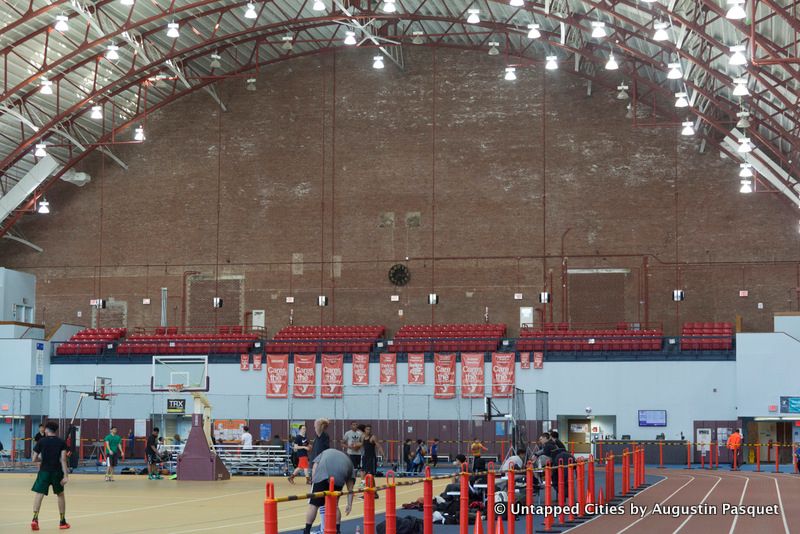
The Drill Floor today has a basketball court, running track and offices but you can see remnants of past use right before your eyes. Above the seats on the second floor, there are several bricked up openings. In the larger openings there were once staircases that led directly down to the drill floor. The smaller opening on the left was once a window for the commandants to watch the activity below.
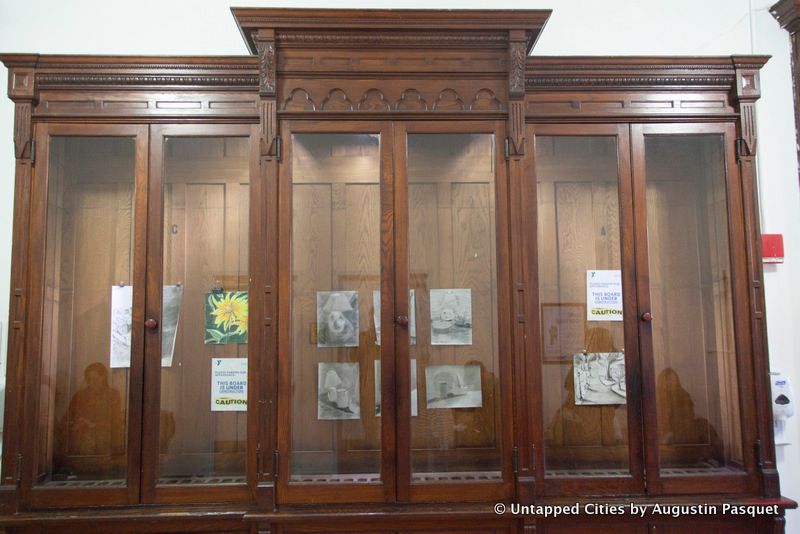
Other parts of the Armory still retain their original heavy wooden doors and glass cases. Though often filled with children’s art, if you look down inside the cases, you’ll still find wooden cutouts for the storage of rifles.
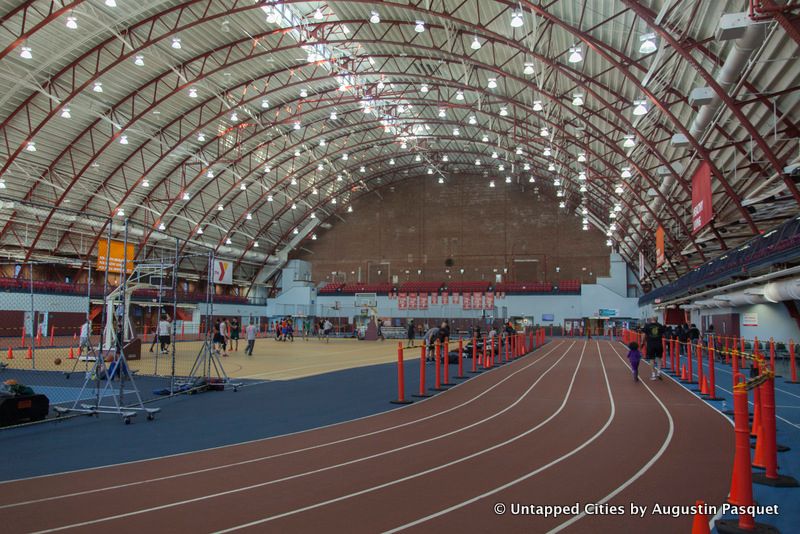
In 1955 and 1956, the Brooklyn Dodgers used the drill hall of the armory as a practice location because their practice grounds were too wet that season. Tom Miskel says that the hall was large enough to accommodate the trajectory of the baseballs. You can find other remnants of the Brooklyn Dodgers in Crown Heights, and other locations in Brooklyn.
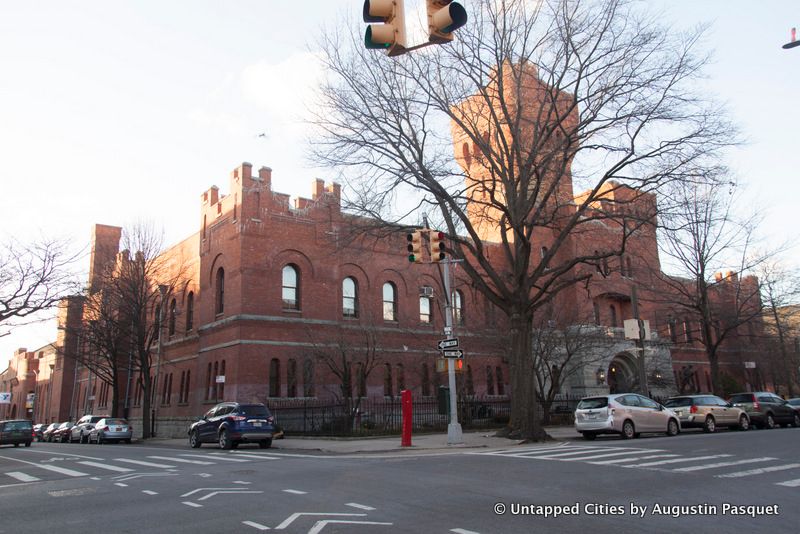
The entrance hall of the Park Slope Armory, now part of the Park Slope Armory Women’s Shelter, has a grand double staircase. There was also once a stained glass window, believed to have been made by Louis Comfort Tiffany. In the late 1990s, this window was moved to the Staten Island Armory.
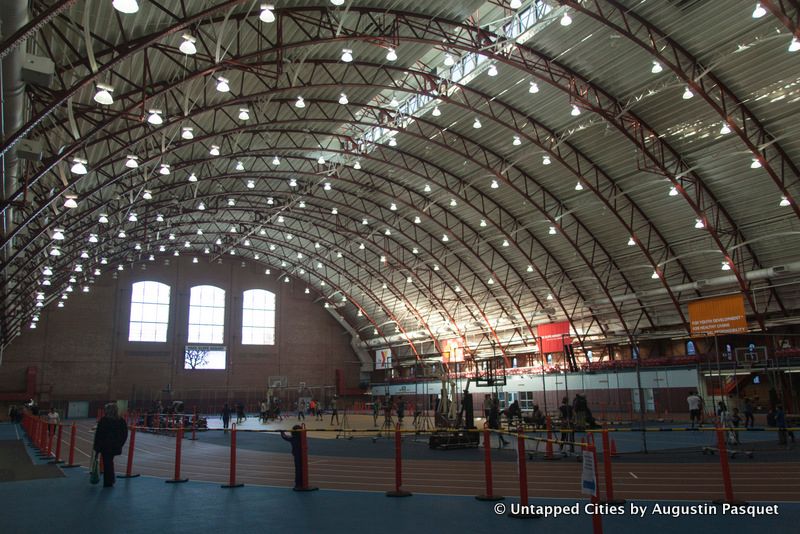
For the Brad Pitt/Anthony Hopkins film Meet Joe Black, the interior of the mansion was actually filmed on a set built on the drill floor (exteriors were at the real-life Aldrich Mansion in Rhode Island). The pool scenes of the Central Park penthouse were also filmed in the armory.
Scenes from Donnie Brasco was also filmed in the Park Slope Armory, as well as Robert DeNiro’s film Raging Bull and Goodfellas (where Paulie is in prison), which filmed in the abandoned shooting gallery area. The Meg Ryan/Matthew Broderick Film Addicted to Love also used the drill hall as the set for a Manhattan loft. Miskel tells us that residents found the filming so disruptive, the production company of Meet Joe Black bought the neighbors air conditioners to appease them.
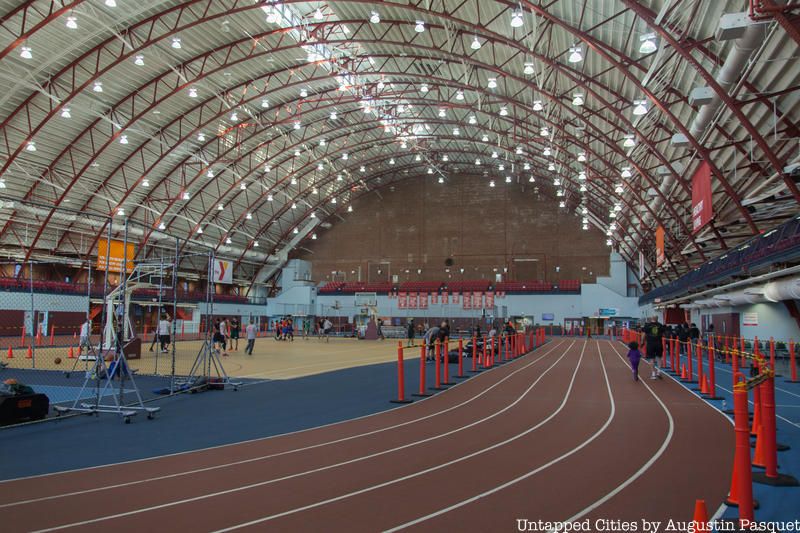
Over the years, the Macy’s Thanksgiving Parade balloons have appeared inside the Park Slope Armory. In 1995, the New York Times reported that “Snoopy, the Pink Panther, Woody Woodpecker and other balloons from the Macy’s Thanksgiving Day Parade will be displayed in the Park Slope Armory, at 15th Street and Eighth Avenue, from May 4 to May 7. The $2.50 admission fee will benefit Prospect Park and local charities.”
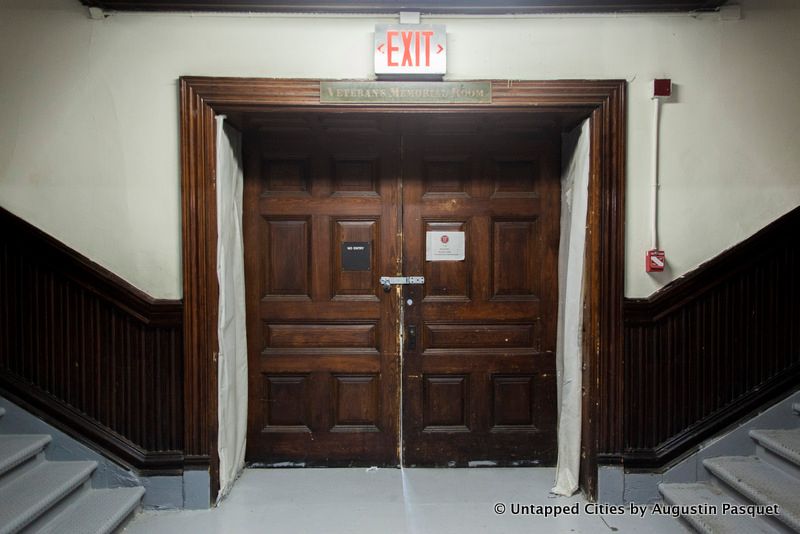
In the 1950s, footprints appeared on the newly-painted ceiling and walls of the Park Slope Armory. It was said that they belonged to a Civil War veteran who died at the armory in 1910 or 1911.
Next, see 22 of the city’s remaining armories and how they’re used today.
Subscribe to our newsletter